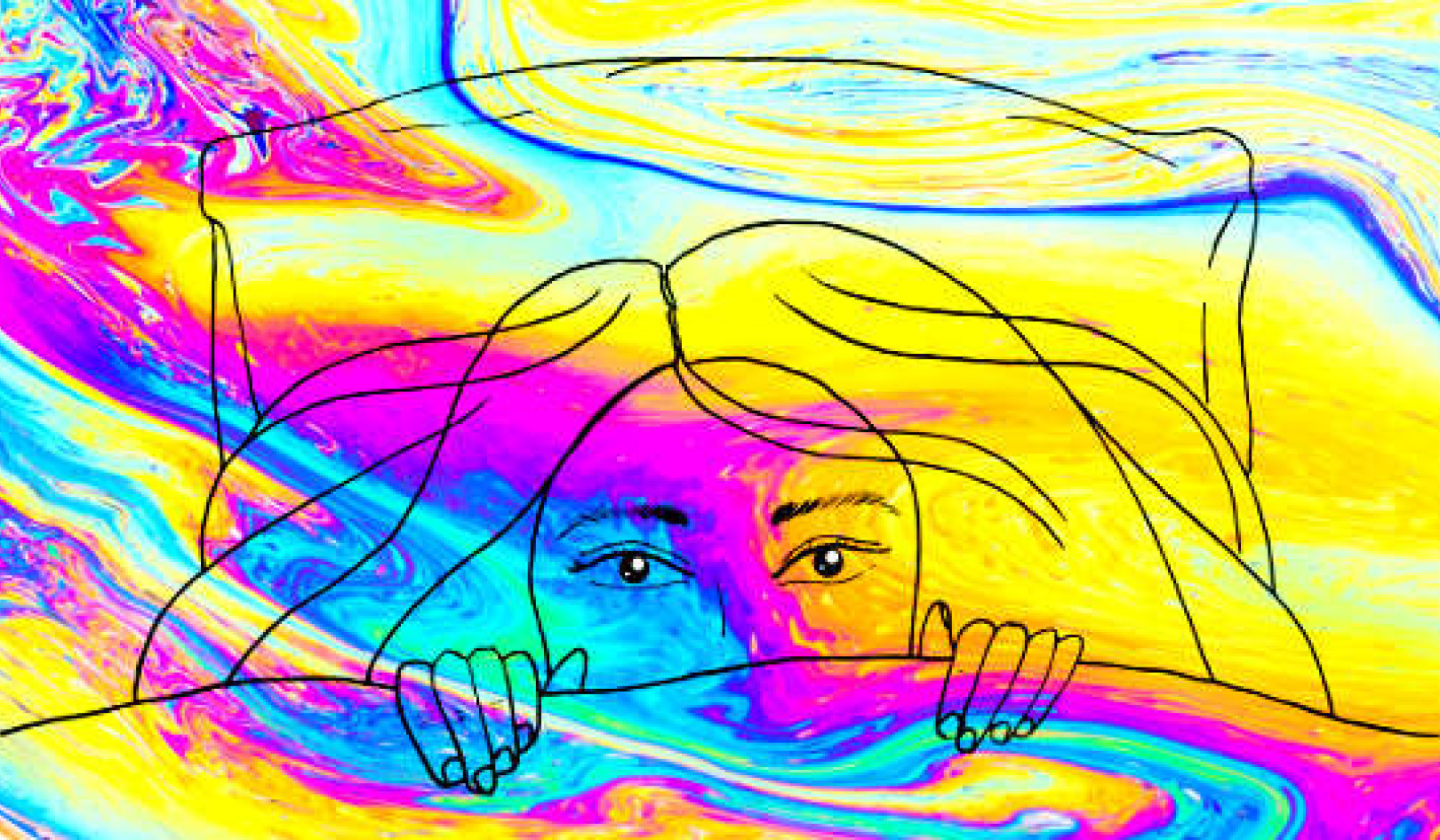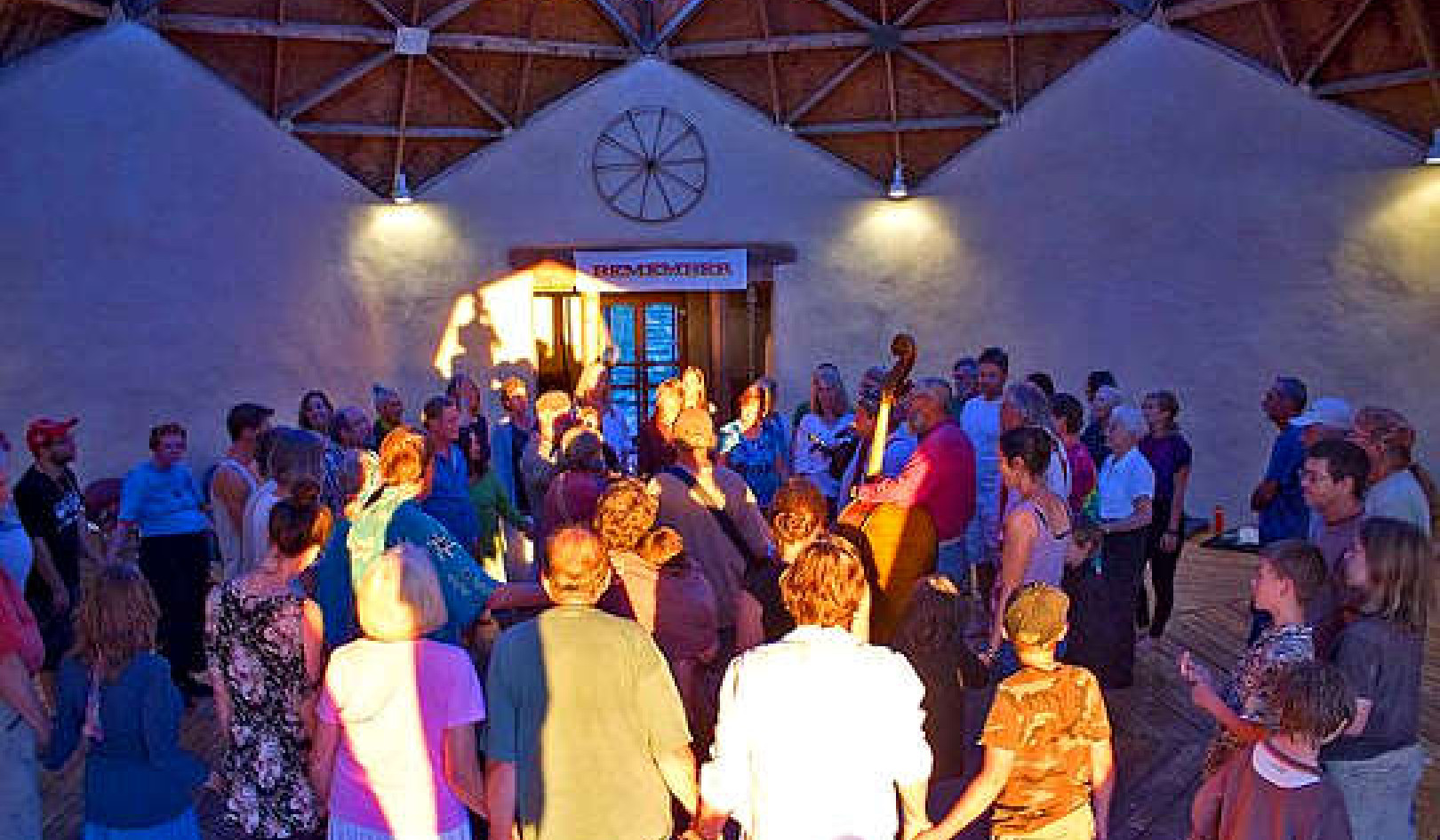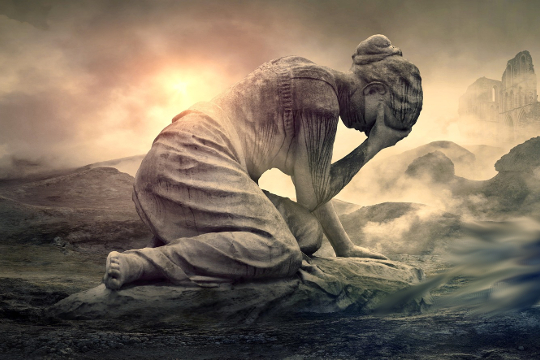
Image by Stefan Keller
Many people have probably seen pictures of yogis lying on a bed of nails. They are often pictured performing in a public place, a crowd gathered to witness this feat believed to demonstrate spiritual achievement. Their ability to lie on a bed of nails is not accomplished through any esoteric magic, or because of special rubber-tipped nails, but is primarily due to the fact that they have discovered how to become more comfortable with feelings of pain. One might even say they have learned not to take pain so personally.
A classical Buddhist text, the Samyutta Nikaya, describes two kinds of pain. The person with an untrained mind “when touched by painful bodily feelings, weeps and grieves and laments.” This person “experiences both a bodily pain and a mental one. But one who has trained in mindfulness, when touched by a painful bodily feeling, does not weep, grieve, and lament. That person] feels only one kind of pain.”
In his book Full Catastrophe Living, Jon Kabat-Zinn explains how chronic pain patients experienced significant reductions in their levels of pain through a program that includes mindfulness meditation. At the Stress Reduction Clinic at the University of Massachusetts (UMass) Medical Center, Kabat-Zinn developed pioneering work exploring the uses of meditation in medicine and healing. One important aspect of this work applied the Buddha’s Second Foundation of Mindfulness, focusing on the sensations of pain.
New Attitude: Befriending Pain
The attitude of mindfulness meditation toward pain is to get to know it and name it, and maybe even make friends with it. The first instruction for participants in pain management clinics is to begin to experience their pain, to feel the sensations, allow them, explore them. A key tool the participants are given is mindfulness, which can provide some space from habitual reactions to the sensations.
Over the courseof Kabat-Zinn’s program, some participants experience such a radical shift in their relationship to their pain that they no longer use the word “pain” to describe it. What is being felt instead, they report, is simply very strong sensations.
Using a standard pain-rating index questionnaire, more than 61 percent of the patients in Kabat-Zinn’s early clinic achieved at least a 50 percent reduction in their chronic pain, while 72 percent achieved at least a 33 percent reduction. In follow-up studies done up to four years after the patients had left the clinic, Kabat-Zinn discovered that the effects of the meditation program had been lasting.
Most of the former participants were still meditating. They found it positively affected their lives in many ways, and their pain levels remained low. Similar results were reported for each group that completed Kabat-Zinn’s eight-week program at the clinic.
Pain: How You Respond to It
What was happening in Kabat-Zinn’s clinic was more than a medical technique. The participants were developing more ease with how they experienced and responded to pain, and also seeing into the ever-changing nature of sensation. One might even say there was a shifting of identity going on, that the participants began to take their experience of pain a bit less personally. What was once “my pain” had perhaps become simply “pain,” a condition of being human.
Fast forward a few decades: Kabat-Zinn’s original Stress Reduction Clinic is now the UMass Memorial Health Center for Mindfulness, and his Mindfulness-Based Stress Reduction (MBSR) program can be found in hospitals, universities, government agencies, and other organizations worldwide. Studies continue to come up showing the significant benefits of these programs on participants’ well-being.
Sitting Till It Hurts
Some schools of meditation emphasize sitting for long periods of time in one posture without moving, partly as an unspoken way of offering the student the opportunity to meet pain in a controlled setting, and to examine its nature. If you sit long enough, almost invariably pain will show up.
Like many new practitioners, when I began to meditate I had a very difficult time getting in to a comfortable seated position on my pillow on the floor. It was impossible for me to get into the traditional full lotus, with the legs folded up; around, and through each other like pretzels, and I struggled just to get into a relatively stable “half-lotus” that still left my knees wobbling above the floor.
After several months of meditation practice in India, during one intensive retreat Goenka guided his students to sit without moving for increasingly long periods of time. I worked up to taking vows not to change my bodily posture for up to two hours. And no matter how I tried to cushion my buttocks or my knees, after a while the pain would begin, often turning into the searing, burning variety.
At that point, I could no longer focus my awareness on anything but the pain. Luckily that was what I was instructed to do when the pain arose: to focus mindfulness on the pain—to taste it, swim in it, burn with it—and also to explore my habitual reactivity to it.
I am not a martyr for enlightenment nor particularly heroic, but gradually I was able to sit with the pain for up to two hours. And the longer I sat with pain, the easier it became for me to experience it. I found that the feelings were continually changing, the so-called pain dissolving into a flowing stream of sensations, or becoming a deep pulse like a bass drumbeat, or a snaking, shivering series of twitches. As I came to understand that the pain was not solid nor constant, it was no longer so threatening.
Working with sensations of pain in meditation has given me a deep sense of confidence that I can manage the intense difficulties that life might have waiting for me, and also a new found courage.
As a side note, given that so many of us have chronic injuries, physical limitations, or just a general proclivity towards pushing oneself to the point of injury, I’m not sure that I’d make this type of sitting a frequent practice for myself these days. This aging body doesn’t need to be sitting in meditation for pain to arise; just getting out of bed in the morning does the trick.
Copyright ©2022. All Rights Reserved.
Reprinted with permission. of the publisher,
Inner Traditions Intl.
Article Source:
Being Nature: A Down-to-Earth Guide to the Four Foundations of Mindfulness
by Wes "Scoop" Nisker.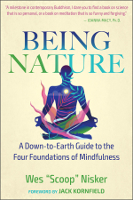 Using the traditional Buddhist meditation series of the Four Foundations of Mindfulness as a framework, Wes Nisker offers a witty narrative along with practical meditations and exercises to train the mind to overcome painful conditioning and gain greater self-awareness, increased wisdom, and happiness. He shows how recent discoveries in physics, evolutionary biology, and psychology express in scientific terms the same insights the Buddha discovered more than 2,500 years ago, such as the impermanence of the body, where thoughts come from, and how the body communicates within itself.
Using the traditional Buddhist meditation series of the Four Foundations of Mindfulness as a framework, Wes Nisker offers a witty narrative along with practical meditations and exercises to train the mind to overcome painful conditioning and gain greater self-awareness, increased wisdom, and happiness. He shows how recent discoveries in physics, evolutionary biology, and psychology express in scientific terms the same insights the Buddha discovered more than 2,500 years ago, such as the impermanence of the body, where thoughts come from, and how the body communicates within itself.
Presenting a variety of new ways to harness the power of mindfulness to transform our understanding of both ourselves and the world, Nisker teaches us how to put our understanding of evolution in the service of spiritual awakening.
Click here for more info and/or to order this paperback book. Also available as a Kindle edition.
About the Author
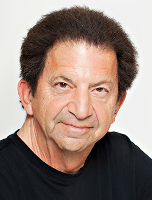 Wes “Scoop” Nisker is an award-winning broadcast journalist and commentator. He has been a meditation teacher since 1990 and leads mindfulness retreats internationally. The author of many books, including The Essential Crazy Wisdom, he is founding coeditor of The Inquiring Mind, an international Buddhist journal, and he is also a standup “dharma comic.”
Wes “Scoop” Nisker is an award-winning broadcast journalist and commentator. He has been a meditation teacher since 1990 and leads mindfulness retreats internationally. The author of many books, including The Essential Crazy Wisdom, he is founding coeditor of The Inquiring Mind, an international Buddhist journal, and he is also a standup “dharma comic.”
Visit his website at WesNisker.com/
More Books by the author.




















